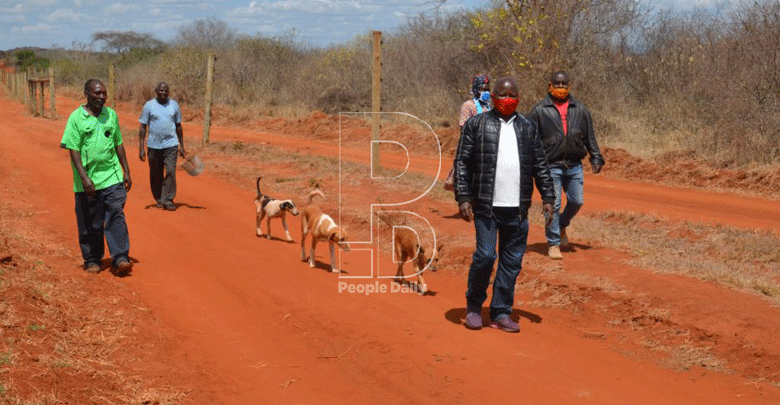Agency to erect 93-km electric fence in Tsavo

Herds of towering elephants shuffling across the undulating plains of Tsavo with their indolent grace have varying significance depending on who sees them.
To tourists, such herds are undoubtedly the epitome of nature’s marvels. To conservationists and bio-diversity experts, such herds are genesis of studies based on the legendary jumbos’ intelligence and the strong family ties existing amongst members of a herd.
However, for artisanal farmers in several villages, including Mgeno in Mwatate sub-county and Sagalla, Maungu and Kasighau Voi sub-county, the mere mention of elephants dredges up agonising memories they would rather keep hidden.
When they talk in bitter tones, they cite wanton crop destruction, loss of property, disruption of livelihoods and in the worst case; deaths.
“They bring nothing but destruction,” says Maria Ngalo, a small-scale farmer in Sagalla. Hundreds of farmers in conflict hotspots in the region share her bitterness, anger, and hopelessness.
However, if recent plans by Kenya Wildlife Service (KWS) for containment and prevention of perennial conflicts is anything to go by, such hostility towards elephants from locals might just become a faint memory that lingers from an unpleasant past.
County hotspots
Ms. Zainabu Salim, KWS Tsavo Community, says that monitoring data indicates Kasighau, Sagalla, Mbololo and Maungu in Voi sub-county; Kishushe in Wundanyi sub-county and Maktau, and Bura in Mwatate sub-county are the classified as the county hotspots where conflict incidents are reported with alarming frequency.
While speaking in Mwatate during a County Development Implementation and Coordination Committee (CDICC) meeting, Zainabu notes that KWS has finalized an extensive public participation exercise in readiness for the mega 93km electric fence construction project that is set to cut across several villages in Voi and Mwatate Sub-counties.
The meeting was chaired by the County Commissioner, Rhoda Onyancha. Other officials present include Polycarp Onyango from Presidential Delivery Unit, County Police Commander, Patrick Okeri, senior officials from key departments, including education, KeNHA, KURRA and Lands amongst others.
“With the public participation exercise concluded, we are now set to roll out the construction of the fence that will curb these conflicts,” she said.
The proposed fence will cut across Mgeno area and Sisal Estate in Mwatate before passing across Sagalla, Maungu and Kasighau and end at Bachuma near the border of Taita- Taveta and Kwale County. This is the longest electric fence done by the Ministry of Wildlife in the region.
Once complete, the proposed fence will push the total length of fences constructed by KWS across the county to over 300km. Other fences already in place and working include the Kamutonga-Bura, Ndii-Ndara, Maktau-Ndii and Jipe-Salaita amongst others.
KWS officials say that farmers in many villages where the fences were erected recorded a bumper harvest; a fact that is used as a testament to the effectiveness of such fences to curb conflicts in the region.
“Our survey shows farms that were previously raided along the fence yielded adequate harvest last year because of the fence. This is why we continue to advocate for use of fences to avoid conflict and empower the communities in terms of food security,” said Ms. Zainabu.
A section of farmers in Ndingai, Kamutonga and Mkengelenyi villages attest to this achievement. Ms. Christine Muisyo, an artisanal farmer at Ndingai, says since the Kamutonga fence was erected, she has harvested not just cereals but also fruits, including pawpaw, watermelon and oranges. “Our yields are now visible. The fence has kept the elephants inside the ranches,” she said.
Illegal settlements
However, one major factor that exacerbates the conflicts between jumbos and local residents is the spread of illegal settlements along the Standard Gauge Railway’s (SGR) underpasses specifically built to allow elephants to cross in Tsavo National Park from ranches.
Such settlements are at Ndii, Maungu and Bachuma area where hundreds of residents have settled between the Nairobi-Mombasa Highway and the SGR embankment and in close proximity to the underpasses. As a result, migrating elephants become nervous and often turn back to the community areas.
“When we track the movements of collared elephants, we can tell they become stranded once they find the underpasses already blocked. That is when they stray and eventually trigger the conflicts,” she said. – KNA









